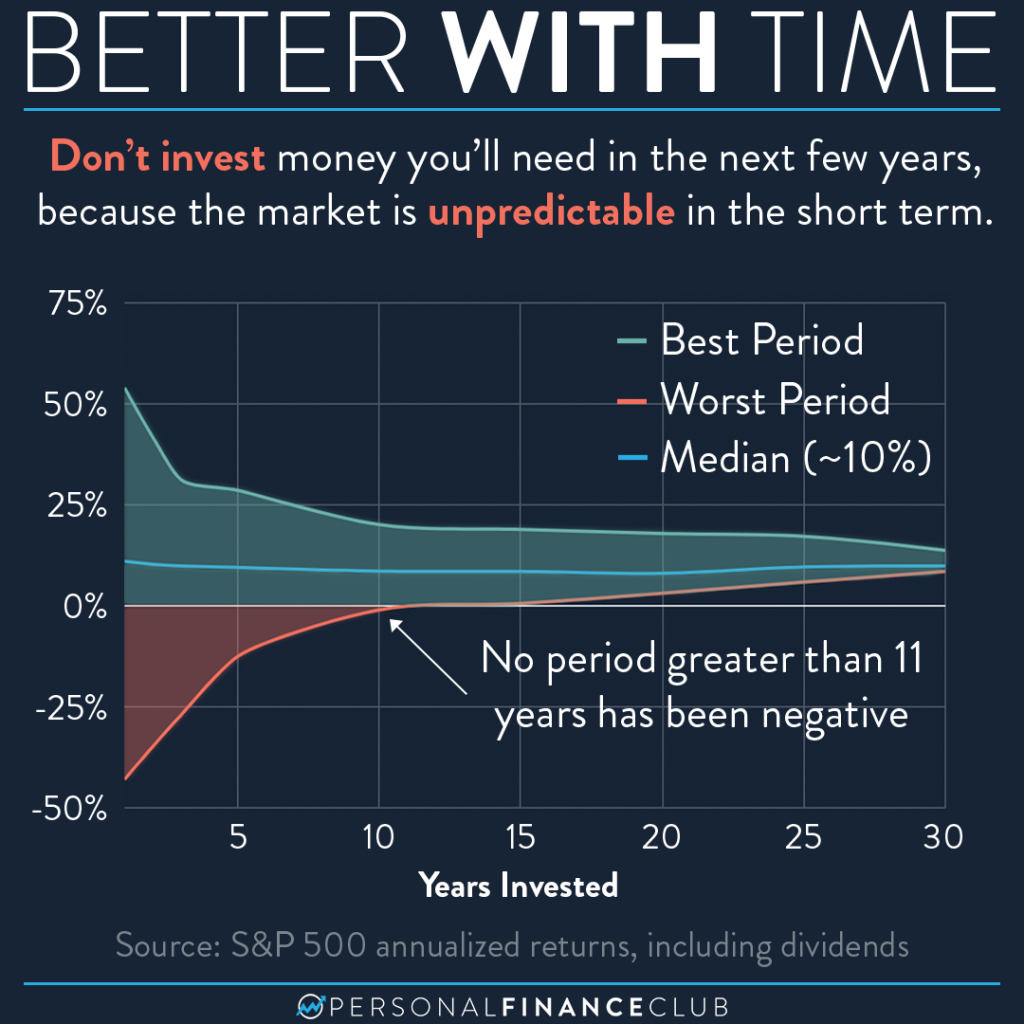Determining Your Investment Capacity
How much money to invest in stocks per paycheck – Before diving into stock investments, establishing your investment capacity is crucial. This involves determining a realistic percentage of your paycheck to allocate, considering essential expenses and financial goals. Failing to do so can lead to financial strain and inconsistent investment habits. A well-defined investment strategy starts with understanding your financial capabilities.
Percentage Allocation for Stock Investments
The percentage of your paycheck dedicated to stock investments varies significantly depending on individual circumstances. A general rule of thumb suggests allocating 10-15% for long-term growth, but this can range from 5% for those with significant debt or limited income to 20% or more for higher earners with established financial stability. For example, someone earning $5,000 a month might allocate $500 (10%) for investments, while someone earning $10,000 might allocate $2,000 (20%). Increasing this percentage gradually as income rises and debt decreases is a sensible approach. The impact of these allocations is directly proportional to the investment returns; a higher allocation leads to potentially faster wealth accumulation but also carries a higher risk of financial strain if returns are negative.
Budgeting for Investment

Creating a detailed budget is paramount to identifying surplus funds available for investment. This involves tracking all income and expenses to determine the amount left for investment after covering essential needs. A sample budget template might include categories like housing, transportation, food, utilities, debt payments, and entertainment. By carefully monitoring expenses, you can pinpoint areas for potential savings and redirect those funds towards investments.
Sample Budget Template:
| Income | Amount |
|---|---|
| Salary | $5000 |
| Other Income | $0 |
| Total Income | $5000 |
| Expenses | Amount |
| Housing | $1500 |
| Transportation | $500 |
| Food | $700 |
| Utilities | $300 |
| Debt Payments | $500 |
| Entertainment | $500 |
| Total Expenses | $4000 |
| Savings/Investment | $1000 |
Saving Methods for Investment Capital
Several methods can help accumulate investment capital. Automatic transfers from checking to savings or investment accounts ensure consistent contributions without requiring manual effort. Dedicated savings accounts, specifically earmarked for investments, further reinforce the commitment to saving. High-yield savings accounts can offer better returns than regular accounts, maximizing the growth of your investment fund before it is deployed in the stock market. The choice depends on individual preference and financial discipline.
Risk Tolerance and Investment Strategy
Your investment strategy should align with your risk tolerance. Risk tolerance reflects your comfort level with potential investment losses. Conservative investors prefer lower-risk options, while aggressive investors are comfortable with higher risk for potentially higher returns. Understanding this crucial aspect helps in selecting suitable investment vehicles.
Investment Strategies Based on Risk Tolerance
The table below illustrates different investment strategies categorized by risk level, investment type, and potential return. It is important to note that potential returns are not guaranteed and past performance is not indicative of future results.
| Risk Level | Investment Type | Potential Return |
|---|---|---|
| Conservative | High-yield savings accounts, government bonds | Low (2-5%) |
| Moderate | Index funds, dividend-paying stocks, balanced mutual funds | Medium (5-10%) |
| Aggressive | Individual stocks, growth stocks, sector-specific ETFs | High (10%+), but higher risk of loss |
Investment Vehicles and Risk Tolerance
Different investment vehicles carry varying levels of risk and return. Index funds offer diversification at lower costs compared to individual stocks. ETFs (Exchange-Traded Funds) provide diversification similar to index funds but are traded on exchanges like individual stocks. The choice depends on your risk tolerance, investment timeframe, and knowledge of the market.
| Investment Vehicle | Risk | Return Potential | Diversification |
|---|---|---|---|
| Index Funds | Low to Moderate | Moderate | High |
| Individual Stocks | High | High (potentially) | Low (unless carefully selected) |
| ETFs | Low to High (depending on the ETF) | Moderate to High | Moderate to High |
Diversification for Risk Mitigation
Diversification is crucial to mitigate risk. It involves spreading investments across different asset classes (stocks, bonds, real estate) and sectors to reduce the impact of poor performance in any single investment. A diversified portfolio for a conservative investor might include a mix of government bonds and high-yield savings accounts, while an aggressive investor might include a mix of growth stocks, value stocks, and emerging market ETFs. The key is to tailor the level of diversification to your risk tolerance and investment goals.
Investing Regularly vs. Lump Sum Investments: How Much Money To Invest In Stocks Per Paycheck
The choice between investing a fixed amount per paycheck (regular investing) or making larger, less frequent investments (lump sum) depends on several factors, including market timing abilities and risk tolerance. Each approach has its own advantages and disadvantages.
Regular vs. Lump Sum Investing: A Comparison
Regular investing, also known as dollar-cost averaging, involves investing a fixed amount at regular intervals, regardless of market fluctuations. This strategy mitigates the risk of investing a large sum at a market peak. Lump sum investing involves investing a large sum at once, potentially maximizing returns if the market performs well. However, it carries a higher risk of loss if the market declines after the investment.
Hypothetical Scenario: Suppose you have $12,000 to invest. Investing $1,000 monthly over a year via dollar-cost averaging might yield better results than investing the entire $12,000 at once if the market experiences significant volatility during the year.
Dollar-Cost Averaging and Market Volatility

Dollar-cost averaging reduces the impact of market volatility by averaging the purchase price of investments over time. If the market declines, you buy more shares at lower prices, and vice versa. This strategy minimizes the risk of investing a large sum at a market high. For example, investing $100 per month for 12 months during a volatile market will result in a lower average cost per share compared to investing $1200 at the market’s peak.
Decision-Making Flowchart
The following flowchart illustrates the decision-making process for choosing between regular and lump-sum investing:
Start → Assess Risk Tolerance → High Risk Tolerance? → Yes → Lump Sum Investment → End; No → Regular Investment (Dollar-Cost Averaging) → End
Tracking Progress and Adjustments
Regularly monitoring investment performance and making necessary adjustments is crucial for long-term success. This involves tracking your portfolio’s growth, identifying potential red flags, and seeking professional advice when needed.
Investment Tracking Sheet
An investment tracking sheet should include details like the investment date, asset type, purchase price, quantity, current value, and returns. This allows you to monitor your portfolio’s performance and identify areas needing attention. A simple spreadsheet or dedicated investment tracking software can be used for this purpose. The sheet should be updated regularly to reflect changes in the market and your portfolio.
Identifying Red Flags in Investment Performance
Several red flags may indicate problems with your investment strategy. Consistent underperformance compared to benchmarks, significant losses in a short period, or unexpected changes in the investment’s fundamentals are some examples. Immediate action might include reviewing your investment strategy, diversifying further, or seeking professional advice.
The Role of Professional Financial Advice
Seeking professional financial advice is beneficial, particularly when dealing with complex investment strategies or significant financial decisions. A financial advisor can provide personalized guidance based on your risk tolerance, goals, and financial situation. While not mandatory, professional advice can be particularly valuable for those lacking investment experience or needing help navigating market volatility.
Long-Term Investment Goals and Time Horizon
Your investment time horizon significantly influences your risk tolerance and investment choices. Long-term investors (e.g., retirement planning) can tolerate more risk than short-term investors (e.g., down payment). Understanding this relationship is crucial for making informed investment decisions.
Investment Time Horizon and Risk Tolerance
Longer time horizons allow for greater risk tolerance because there’s more time to recover from potential losses. Short-term goals necessitate a more conservative approach to minimize the risk of losses before the target date. For instance, someone investing for retirement (long-term) can allocate a higher percentage of their portfolio to stocks, while someone saving for a down payment (short-term) might opt for less risky options.
Investment Goals and Amount Invested, How much money to invest in stocks per paycheck
Different investment goals require varying investment amounts. Retirement planning typically demands larger and more consistent investments over a longer period. Saving for a down payment or education may involve shorter timeframes and potentially smaller, more focused investments. The amount invested per paycheck should align with the specific goal’s financial requirements and time horizon.
Investment Goals, Time Horizons, and Strategies
| Investment Goal | Time Horizon | Suggested Investment Strategy |
|---|---|---|
| Retirement | 30+ years | Diversified portfolio with a higher allocation to stocks |
| Down Payment | 3-5 years | Conservative investments with lower risk |
| Education | 10-15 years | Moderate risk strategy with a mix of stocks and bonds |


